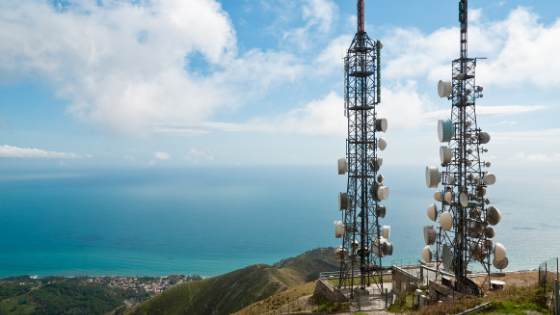In 2014, 261,930 workers from the private sector, as well as state and local government, missed work due to fall-related injuries. About 798 workers died of their injuries.
Falls are a serious risk in the workplace, and it doesn’t take a big fall to create serious damage. The case of Precision Communications Inc. demonstrates the serious risk of fall-related hazards in the workplace.
Here’s what you need to know about the alleged safety violation, the consequences, and your responsibility as an employer to prevent fall hazards and injuries.
Kevin D. Wright and Precision Communications Inc.
This particular fall violation involves Kevin D. Wright and his employer, Precision Communications Inc.
Wright fell more than 1,000 feet from an Iowa television tower on May 22, 2019 near Alleman in Polk County, Iowa. Wright was repairing a KDSM FOX 17 tower.
At the time of the fall, Wright was splicing transmission lines to hook up an existing antenna. When he disconnected his positioning lanyard to reposition himself, he slipped and fell more than 1,000 feet.
The fall occurred because Wright was not attached to safety equipment meant to slow or stop his fall. He was not using a safety harness and lanyard, or any other sort of fall protection, like a guardrail or safety net.
The safety equipment was available for use but was not being used at the time of Wright’s fall.
Wright later died of injuries incurred in his fall.
Current OSHA Fall Prevention Regulations
The Occupational Safety and Health Administration (OSHA) does have regulations in place specifically to prevent accidents like Kevin Wright’s.
Employers are legally obligated to set up fall protection systems to prevent employees from falling. These fall protections must be provided at any elevation of four feet or higher.
The employer is responsible for determining whether work surfaces are strong enough to safely support employees while working. Employees should only be allowed to work on surfaces that are known to be safe.
Each employee constructing a leading edge higher than six feet must be protected by fall arrest systems, safety nets, or guardrails. The only exception is if the employer can demonstrate that such systems are infeasible or create a greater risk to workers, at which point employers must provide an alternative.
Employers are also required to educate employees on the risks of fall hazards in a language that the employee can understand.
Fines and Citations for Failure to Comply
Iowa OSHA cited Wright’s employer, Precision Communications, with two serious safety violations totaling $15,520 in fines.
The company was cited and fined for Wright’s failure to utilize safety equipment that should have been available and in use at the time of his accident. They were also cited for using pieces of equipment that did not have the appropriate strength and were not part of the fall system approved by the manufacturer.
As such, Iowa OSHA says, Precision Communications exposed their employees to undue risks that could have been avoided with the appropriate safety equipment and training. Precision Communications is negotiating with OSHA about the alleged violations.
Protecting Workers from Falls
Fall protection may be just one small part of your safety obligations to your workers. But as the death of Kevin D. Wright demonstrates, you cannot afford to ignore falling hazards, even if the risk seems minimal.
